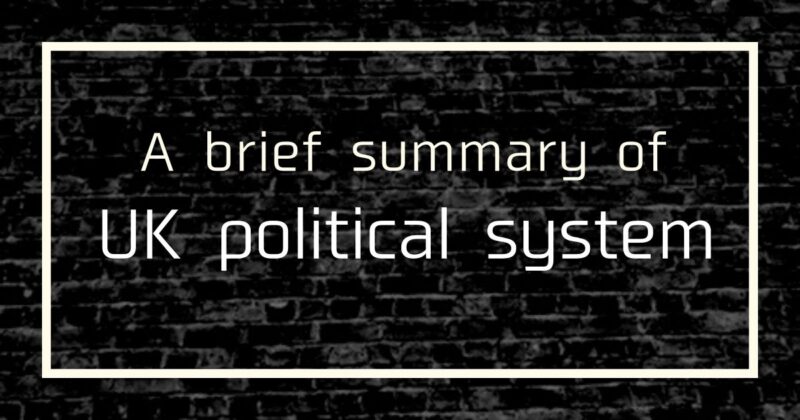Hi. It’s konkaz (@konkazuk) here.
Congratulations on the birth of the new government!!!
Well… turns out it became a dictatorship before even a year had passed.
These days, the government has little to do with most people’s lives.
So yeah — no point reading any further. Total waste of time.
The end!
The general election has successfully ended, with the Labour Party winning as predicted.
The Conservative Party has persistently violated the law to serve their interests, teaming up with far-right media and think tanks.
Needless to say, the Labour Party faces an incredibly tough five years ahead as they attempt to rebuild a country that has been torn apart over the past 14 years.
People must re-examine the past 14 years of events in this country through impartial sources, rather than media edited by far-right individuals. Many newspapers, and regrettably even the BBC to some extent, have been influenced.
Therefore, it is essential for you to collect some fundamental information about the country or your local area, actively.
It’s essential for people to have a clear perspective and realize that, considering the severe damage, it’s understandable that the new government might not be able to meet all promises immediately. We must adopt a long-term view and be patient with the new government.

Incidentally, it’s great news that the Green Party has secured four seats.
Anyway, in this article, I’ve tried to give a clear and concise explanation of the UK’s national and political structure.
British monarch system
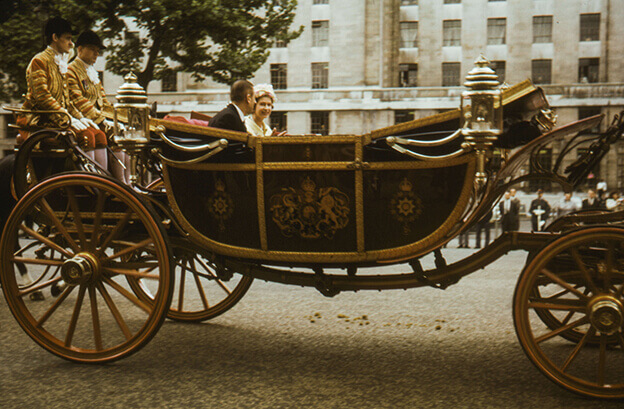
Let’s start with the structure of the state.
What is Constitutional monarchy ?
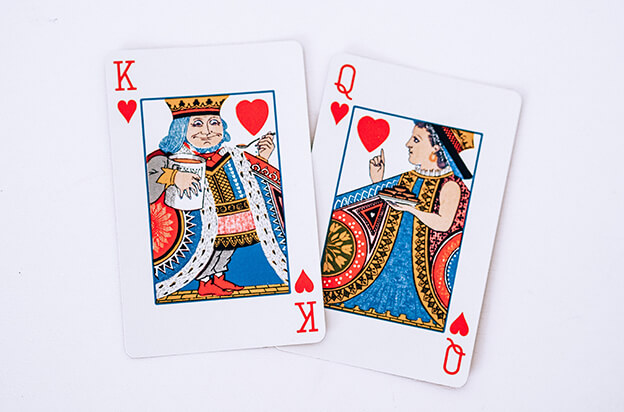
To start with the form of government in the UK, since there is a king (currently Charles III), it is called a monarchy as opposed to a republic, like the United States, Russia, and Germany, which do not have a monarch.
When it comes to a country with a monarch, we might have an unfavorable impression like…
➡︎ a family heritage is handed down to their descendants
➡︎ eventually, they get spoiled and use up all the assets their ancestor once created
➡︎ in order to continue their luxurious lifestyle, hefty taxation is imposed on the nation
➡︎ the nation’s discontent increases to the max
➡︎ “Revolution!“
…as we learned in school.
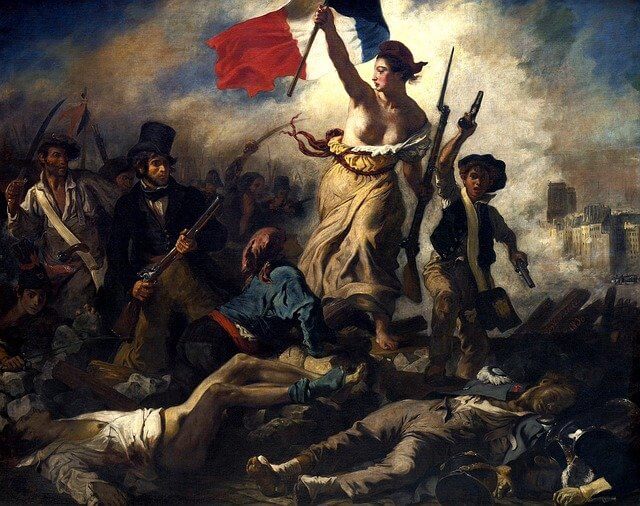
Following World War I, the era of empires began to fade, leading to the rise of many republics. To the younger generation, the presence of a king in the 21st century might appear old-fashioned or questionable.
(Oh…, I almost forgot that we, too, have an Emperor in Japan!)
…but surprisingly, this balance seems to work, and in this country, the UK, democracy is still preserved, at least for now. (Even though the disparity between the wealthy and the poor has undoubtedly widened in the past decade or so…)
This is because, even though the UK is a monarchy, it has adopted a form of parliamentary politics called a constitutional monarchy, where ‘the king reigns but does not hold power‘.
Incidentally, the fact that the Japanese Emperor is regarded as “the symbol of the State and of the unity of the people” (Article 1 of the Japanese Constitution) and stands outside of politics is very similar to the constitutional monarchy of the UK.
The reason for this is that after World War II, when the General Headquarters (GHQ) of the Allied Powers, set up in Tokyo to oversee Japan, faced the issue of what to do with the Japanese Emperor system, they decided to use the UK’s constitutional monarchy as an example and preserve it.
Who holds the power in the country?
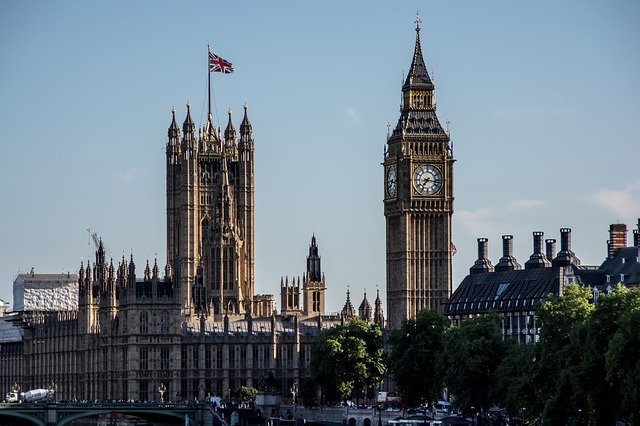
Therefore, although King Charles III is still the head of state, he does not possess political power.
He plays a crucial role in maintaining international relations through visits to other countries and participation in ceremonial events. (The British monarch is also the head of the Commonwealth and the head of the Church of England.)
The most powerful entity within the UK is the government, headed by the Prime Minister, who is Keir Starmer from the Labour Party at present. Political decisions are all carried out through Parliament.
Although the monarch is always outside of politics, when the newly elected Prime Minister visits the King after a general election, the King might say,
“Welcome. I am Charles III. On my behalf, please form the government.”
Therefore, the government is formally referred to as “His Majesty’s Government“.
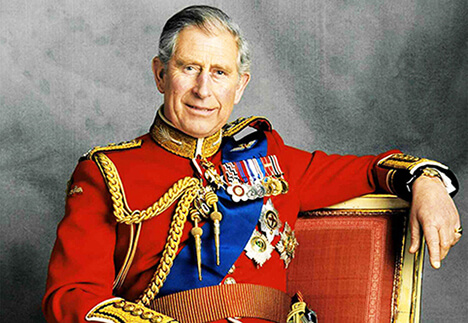
The Prime Minister and the King hold weekly meetings to talk about ongoing social issues and future challenges. The details of these meetings are kept “confidential” and are not released to the public.
The Structure of the UK Government
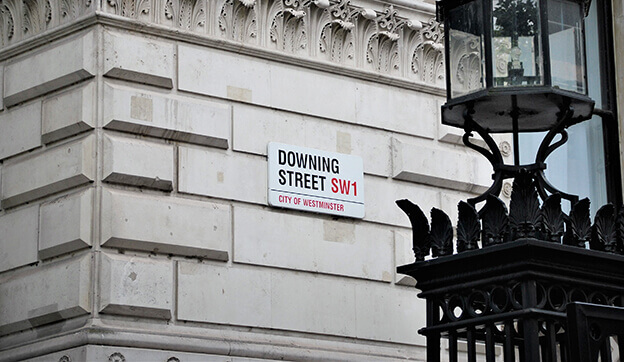
The Prime Minister lives and works at 10 Downing Street and leads the government with the help of the Cabinet and ministers.

The image of 10 Downing Street often appears on the news when the Prime Minister makes important announcements.
After being elected as Prime Minister, the first thing they must do is appoint the members of the Cabinet.
Usually, the Cabinet is made up of 21 to 25 ministers, including the Prime Minister, chosen from the senior ranks of the government.
And as for the current Labour Cabinet (as of July 2024)…
| The names of the ministers | Positions and responsibilities |
| Sir Keir Starmer | Prime Minister The head of the government, responsible for policy formulation, implementation, and representing the country in foreign relations. First Lord of the Treasury As the head of the Treasury, manages the nation’s finances and budget. |
| Angela Rainer | Deputy Prime Minister Supports the Prime Minister and can take over their duties when they are absent. Secretary of State for Leveling Up, Housing and Communities Focuses on addressing regional disparities, improving housing conditions, and fostering community growth. |
| Rachel Reeves | Chancellor of the Exchequer The finance minister of the UK, who leads the creation and application of the country’s financial and economic policies. |
| Yvette Cooper | Home Secretary The top official of the Home Office, managing national law and order, public safety, immigration, the police, and fire services. |
| Ed Miliband | Secretary of State for Energy and Net Zero Responsible for the nation’s energy policy and achieving greenhouse gas emission reduction targets. |
| Mr David Lammy | Foreign Secretary Manages and directs foreign relations, negotiates and concludes international agreements and treaties, and addresses international issues. |
| Pat McFadden | Chancellor of the Duchy of Lancaster Serves as a communication link between the Cabinet and Parliament, and participates in addressing strategic government challenges and executing policies. |
| Shabana Mahmood | Lord Chancellor and Secretary of State for Justice Serves as a bridge between the judiciary and the executive, ensuring the independence of the judiciary while promoting the effective operation of the judicial system. Additionally, as the head of the Ministry of Justice, they oversee the formulation and implementation of policies related to the creation and administration of laws. |
| Wes Streeting | Secretary of State for Health and Social Care Responsible for policies that protect the health and welfare of the public, including the management of the NHS and social care services. |
| Jonathan Reynolds | Secretary of State for Business and Trade Handles the promotion of business and trade, both nationally and internationally, while contributing to the nation’s economic progress. President of the Board of Trade Directs trade policy and negotiations, assisting domestic businesses with their global trading activities. |
| Liz Kendall | Secretary of State for Work and Pensions Handles the administration of public pensions and welfare, and works to boost employment opportunities. |
| John Healey | Secretary of State for Defence Oversees national defense and military operations. |
| Louise Haigh | Secretary of State for Transport Responsible for the administration of all transportation and transit policies and infrastructure. |
| Peter Kyle | Secretary of State for Science, Innovation and Technology Manages all policies and projects related to science, innovation, and technology. |
| Hilary Benn | Secretary of State for Northern Ireland Responsible for all policies and relations with the devolved government in Northern Ireland. |
| Ian Murray | Secretary of State for Scotland Responsible for all policies and relations with the devolved government in Scotland. |
| Bridget Phillipson | Secretary of State for Education Develops policies to improve the quality of the education system and provide equal educational opportunities. Minister for Women and Equalities Creates policies to protect the rights of women and minority groups and to promote an equal society. |
| Lisa Nandy | Secretary of State for Culture, Media and Sport Promotes the cultural, media, and sports interests and participation of the public. |
| Sir Alan Campbell | Parliamentary Secretary to the Treasury (Chief Whip) Responsible for party coordination, parliamentary management, and party organization operations. |
| Darren Jones | Chief Secretary to the Treasury Responsible for preparing the budget, formulating and implementing fiscal policy, and managing the day-to-day operations of the Treasury. |
| Baroness Smith of Basildon | Leader of the House of Lords and Lord Privy Seal Responsible for managing the legislative timetable in the House of Lords and serving as a mediator between Parliament and the government. |
| Lucy Powell | Lord President of the Council and Leader of the House of Commons Responsible for managing the legislative agenda in the House of Commons and facilitating the progress of policy and legislation. |
| Jo Stevens | Secretary of State for Wales Responsible for all policies related to Wales and its relationship with the devolved government. |
| Steve Reed | Secretary of State for Environment, Food and Rural Affairs Oversees policies on environmental conservation, food security, agriculture, and rural communities. |
| Anneliese Dodds | Minister of State (Minister of Women and Equalities) Aims to eradicate discrimination against women and minority groups, fostering an equitable society. |
As you can see, some people are handling two roles. 💦
Sometimes, these cabinet ministers can be moved from one department to another at the prime minister’s discretion, and if their performance is poor, they might even be dismissed.
This is known as a “Cabinet reshuffle“.

In Japan, it’s called “Naikaku-Kaizou“, which means cabinet reorganization.
UK Parliament
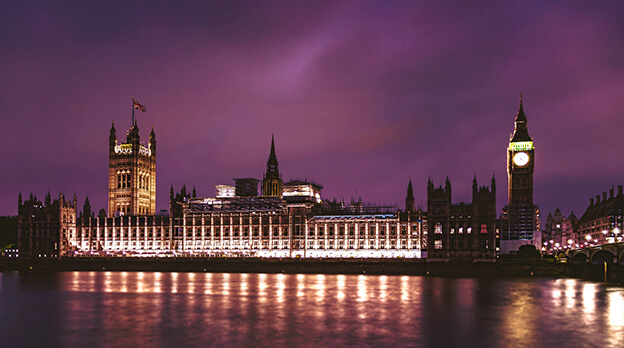
The UK Parliament consists of three major components…
⚫ the House of Lords
⚫ the House of Commons
⚫ the Monarch
Meetings take place in the Palace of Westminster, formally referred to as the “Houses of Parliament“, which is equivalent to Japan’s National Diet Building.
In countries like Japan, Sweden, and Denmark, the parliament is called the “Diet“, whereas in the United States and many Latin American republics, it is referred to as “Congress“.
The parliament is bicameral, consisting of the House of Lords and the House of Commons.
House of Commons
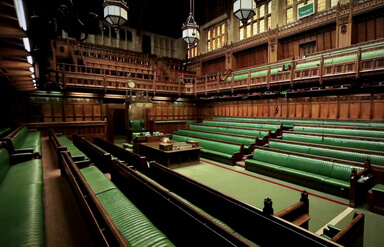
The House of Commons (Lower Chamber) consists of 650 MPs, each elected by the citizens.
Britain is made up of 650 constituencies, and a General Election for the House of Commons is held every five years (or after the dissolution of Parliament).
Citizens who are registered to vote have the right to choose a candidate running for MP in their constituency whom they think best represents their views.

Most candidates running for MP belong to a political party, though there are exceptions.
Here are some of the well-known political parties…
🔹Labour Party
One of the UK’s main political parties, promoting workers’ rights and the expansion of social welfare. Fundamentally left-wing, but has shifted more to the center since the Tony Blair administration, leading to internal policy disputes.
🔹Conservative Party (Tory)
Another major political party in the UK, advocating for a free-market economy and the preservation of traditional values. In recent years, its policies, including Brexit, have favoured wealthy business magnates, leading to a significant decline in public trust.
🔹Liberal Democrats
Moderately left-wing. Prioritizes liberal values and social justice, placing importance on environmental concerns and the protection of human rights. Successfully secured a considerable number of seats in the last election.
🔹Green Party
Focused on environmental protection and creating a sustainable society, this party advocates for climate change action and renewable energy. (I personally wish it could become one of the two major parties!)
🔹Scottish National Party (SNP)
A left-wing party aiming for Scottish independence, promoting the expansion of Scotland’s autonomy and the enhancement of social welfare.
🔹Reform UK
Originally established as the Brexit Party and renamed Reform UK in 2020, this far-right party is also connected internationally with neo-Nazi and other extreme right-wing groups.
As a result of the election, the party that secures the most seats out of the 650 available (currently the Labour Party) becomes the winner and ruling party, forming the government, with the leader of that party becoming the Prime Minister.
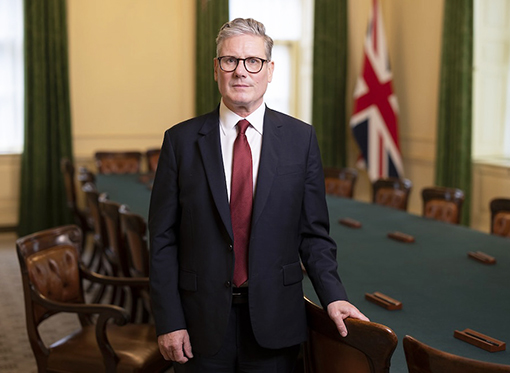
The party with the second highest number of seats is referred to as the Opposition (currently the Conservative Party). They set up a Shadow Cabinet to criticize and question the actions of the ruling government, offering an alternative perspective and holding them to account.
House of Lords
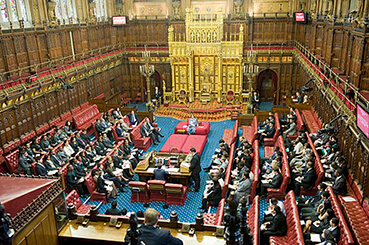
The UK Parliament has another chamber called the “House of Lords,” also known as the Upper House.
The House of Lords is made up of about 800 members, appointed by the monarch following the Prime Minister’s advice, each from different statuses and walks of life.
Members are individuals who have achieved success in various fields such as business, law, science, education, culture, sports, and public service. They use their extensive knowledge and experience to examine issues affecting the entire British population.
The role of the House of Lords (the upper house) is to act as a check on the House of Commons (the lower house), which drives the country through party politics. If the Commons goes off course, the Lords can stop it, and if it stumbles, they offer support.
Any decision made by one house must be approved by the other house.
What do these vocabularies mean?
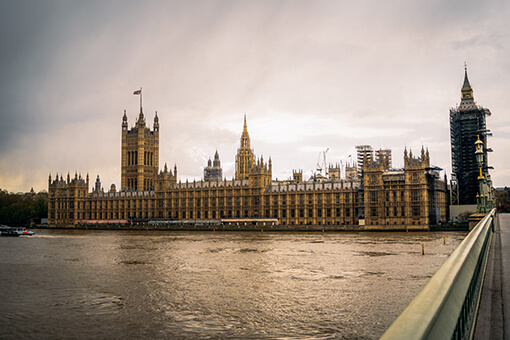
Here, I will break down some of the less familiar political terms that you might hear in the news and think, “What’s this?”
Whip

A Whip is an official within a political party responsible for maintaining order, discipline, and effective communication within the party. Each party has Whips in both the House of Lords and the House of Commons.
Their main duties include…
⚫ensure that party members vote according to party policy rather than personal beliefs, maintaining party discipline during decisions made by vote
⚫communicate the party’s stance to members, report any concerns or objections from members to the leadership
⚫ensure members attend important votes
⚫negotiate or mediate to prevent internal party divisions.
The highest-ranking whip within the party is called the Chief Whip. They coordinate the work of the other whips while maintaining communication with the party leader.
Peer
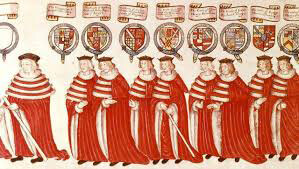
A peer is a member of a particular noble class, especially one who serves as a legislator in the House of Lords.
(While “aristocrat” also denotes nobility, it has a wider meaning and does not always imply a specific political function.)
The “Peerage” in Britain encompasses five levels of nobility.
These are listed in rank order as follows…
⚫Duke
Dukes historically held the greatest amounts of land and power, ranking just below the King. Ex. the Duke of Cambridge & the Duke of Sussex.
⚫Marquess
Marquesses were originally responsible for the defense and administration of border regions, owning large estates just below Dukes.
Ex. the Marquess of Salisbury.
⚫Earl
Earls were local rulers with considerable land and influence.
Ex. the Earl of Derby.
⚫Viscount
Originally an assistant to an Earl, the Viscount title eventually became a noble rank in its own right.
Ex. the Viscount St. Albans.
⚫Baron
Barons swore allegiance to the King, managing territories and providing military support.
Ex. the Baron Addington.
Generally, these ranks are passed down through family heritage over the generations.
“Life Peerage” refers to a noble title granted for an individual’s lifetime only.
It is awarded to those who have made exceptional contributions in various fields such as politics, economics, science, or the arts, or who have provided long-term public service. This title is not transferable to descendants and remains with the person until their death.
Spin doctor
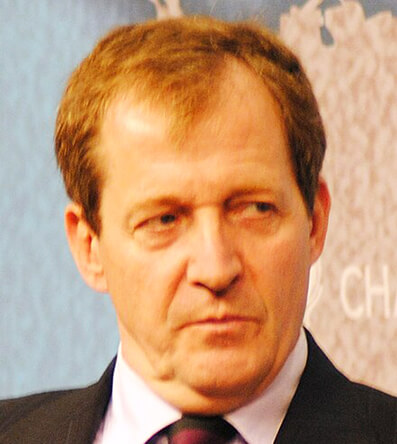
A “spin doctor” is a strategist who works behind the scenes to ensure the success of politicians or political parties.
A notable example is Alastair Campbell, known for his role as the press advisor to former Prime Minister Tony Blair.
The specific roles of a spin doctor include…
⚫ Developing strategies to plan messages and stories conveyed through the media.
⚫ Building and maintaining good relationships with media professionals to control news coverage.
⚫ Advising politicians and parties on how to present a positive image to the public.
⚫ Guiding public opinion favorably by emphasizing certain messages.
⚫ Responding swiftly to any scandals that arise.
So, that concludes this article. Thank you for reading it to the end.
Hopefully the information here was useful for you…
konkaz
*You can read this blog post in Japanese from the link below.
👉 【イギリスの政治制度】をわかりやすく解説
*Maybe you are interested in reading…
👉 【British Education System】explained!!!

